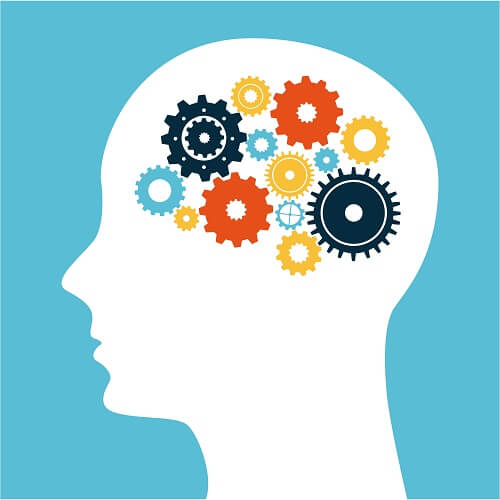Long-term memory can be classified into two fundamental types: implicit and explicit memory. These two systems reflect different states of awareness and involve distinct neural processes. Despite their clear distinction, evidence suggests that implicit memory can influence explicit memory.

Implicit Memory
Implicit memory refers to unconscious memories. They are often tricky to articulate and explain and are usually more emotional and perceptional. Intentional memories influence our current behavior without us intentionally retrieving those memories.
Types and Examples
- Procedural memories include how to drive a car, knit, play an instrument, or play a video game. They are often associated with ‘muscle memory’ or specific actions being second nature.
- Priming is a complex psychological phenomenon where the exposure to one stimulus (such as a word, image, or action) affects how an individual will respond to a second stimulus. These effects are often subtle and can be used to manipulate the behavior of individuals!
- Classical conditioning is the so-called ‘Pavlov’s Dog’ response, in which the individual learns by association. In this example, a neutral stimulus (a bell) was paired with a meaningful stimulus (food). Eventually, the dogs learned to associate the bell with food.

Explicit Memory
Explicit memory refers to conscious memories that we can intentionally recall and articulate. They can be divided into those that involve recalling personal experiences and those that involve remembering facts and information.
Implicit memories are much quicker to learn or retain than explicit memories. Implicit memories can be retained even by a single stimulus, whereas the formation of an explicit memory requires multiple rounds of stimulation and response. That is why you can’t immediately memorize an entire page in a book after reading it once!
Types and Examples
- Episodic memories are our personal experiences, such as the ability to recall events that occurred during our lives.
- Semantic memories are the recollection of pieces of information, definitions, and concepts. For example, remembering the key events of the American Civil War, or being able to recall how digestion works in humans.
- Autobiographical memories are how we build a more general picture of the events throughout our life. They combine episodic and semantic memories. For example, you don’t remember being born, but you know the city in which you were born.
- Spatial memories are how we navigate the world around us and is the reason we can easily find our way around familiar cities.

Work on Patient H.M.
Much of our initial understanding of the differences between these two memory systems came from work on a neuroscience patient, called H.M (his full name was later revealed to be Henry Molaison). You can learn more about his story in the explicit memory article.
In short, H.M. suffered from amnesia after a lobotomy destroyed parts of his brain. He was the subject of well over a thousand published research articles, because the nature of his amnesia allowed scientists to learn more about how different memory systems work, and the brain structures responsible for their function.
Initially, researchers were surprised that despite his ability to form new long-term memories (such as events and information), he was able to learn new skills involving hand-eye coordination (specifically, a mirror drawing exercise). He learned quickly, and his skills improved, but he had no recollection of practicing in the days prior.
Further research into patients with various memory impairments as a result of trauma or neurodegeneration has further developed this research. For example, the hippocampus of affected individuals with Alzheimer’s disease is often the worst structure affected by lesions in the brain. Accordingly, the ability of individuals with Alzheimer’s to form and recall explicit memories is repaired.
Brain Structures Involved
Explicit memory is thought to primarily be controlled by communications between the hippocampus, prefrontal cortex, and the amygdala. In contrast, implicit memory involves the basal ganglia and the cerebellum.
Explicit Memory
The hippocampus is found deep within the temporal lobe of the brain. It is particularly crucial for consolidating information from a short term to a long term memory, as well as spatial awareness. The prefrontal cortex is necessary for the storage and retrieval of long term memories, particularly facts and information. The amygdala is a small structure found close to the hippocampus that participates in emotional learning and memory.
Implicit Memory
The cerebellum is a structure found at the base of the brain, and it receives signals from the brain, spinal cord, and sensory systems to execute fine motor movements. The cerebellum does not initiate the actions but is involved in their coordination and precision. As a result, it is essential in procedural memories as part of the implicit memory system.
The basal ganglia are a pair of structures found deep within the brain. It is involved in a range of processes relating to learning and memory, such as regulating emotion and habit formation. The basal ganglia also have an involvement in ‘action selection’ which is particularly important for controlling sequences of movements in a controlled and smooth manner.
Relationship Between Implicit and Explicit Memory
Implicit and explicit memory work independently of one another, but function in parallel to shape human behavior. It is as yet unclear whether they work together (i.e., in cooperation), or whether one memory system is dominant, competing with the other. The relationship between implicit and explicit memory (and which one takes control of a particular task) is thought to be impacted by stress, chronic drug use, and aging. More recent evidence highlights a robust and measurable effect of implicit memory (specifically, priming) on explicit memory (specifically, fact recall).
Bibliography
